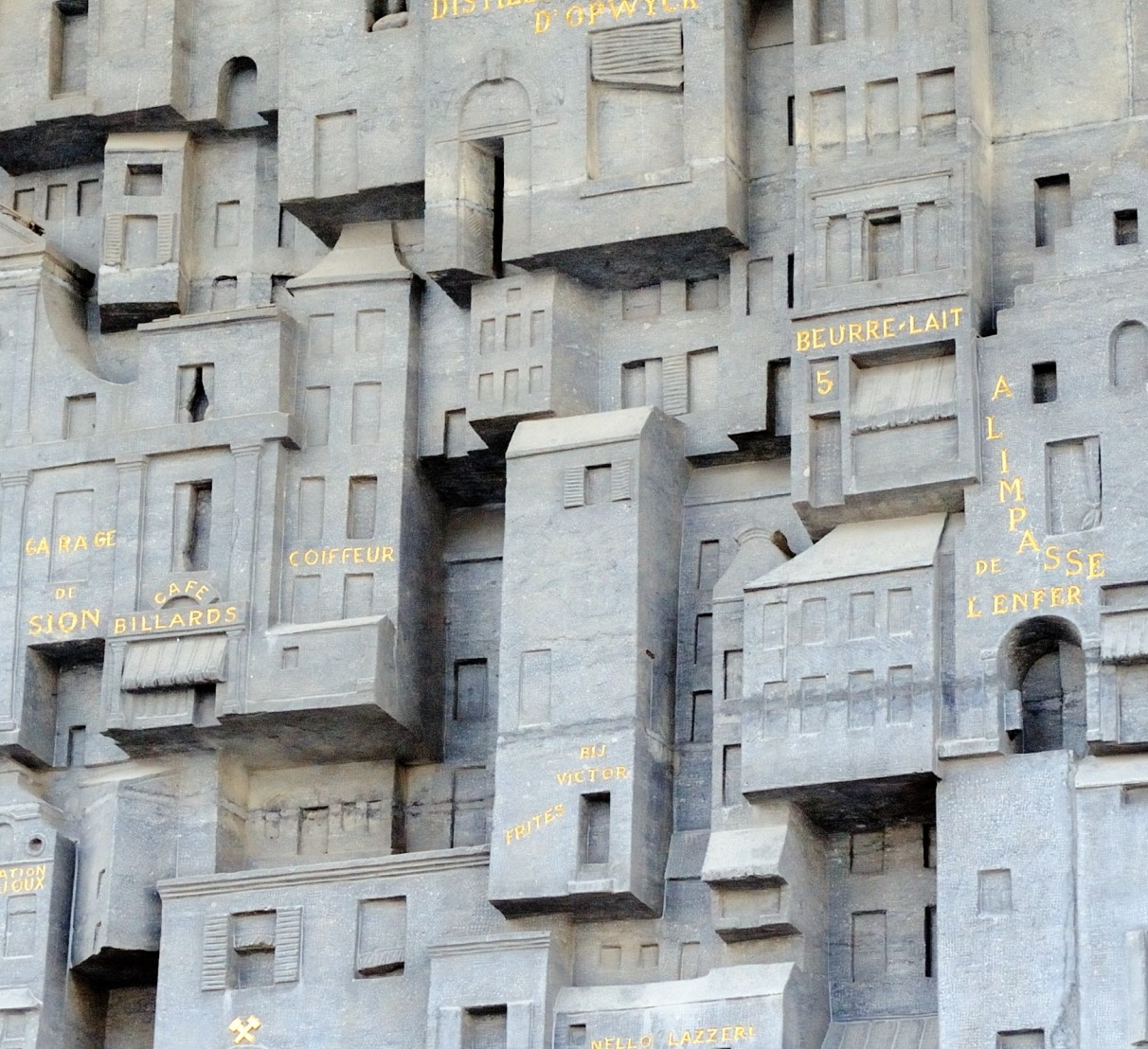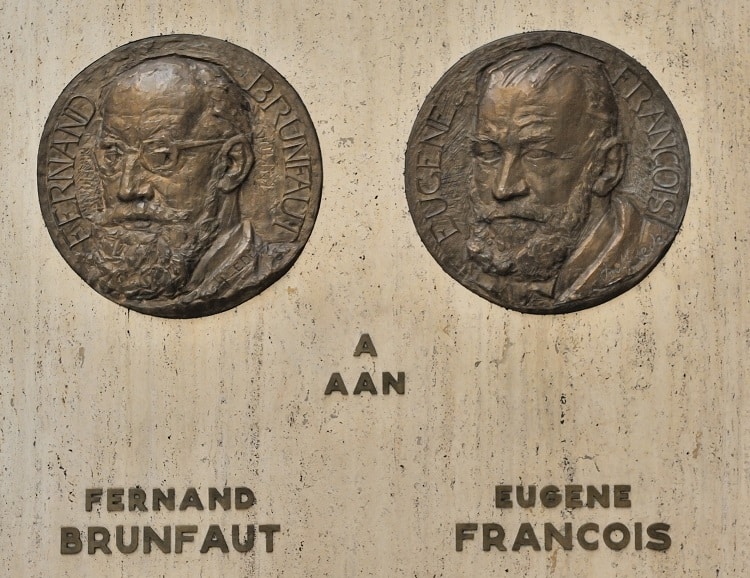At one of the entrances to the station are plaques donated by the National Office of the Nord-Midi connection (NBV/ONJ), one commemorating Fernand Brunfaut and Eugène François, respectively its chairman and a member of its standing committee, and another honouring Victor Horta and Maxime Brunfaut. Both were made by Dof Ledel.
In the ticket office hall, to the left of the main entrance, there is another plaque donated by the NBV/ONJ, this time to honour three of its members. This is the work of Adolphe Wansart. A semi-reclining female figure holds in her hand an image of St Michael in armour striking down the devil. A medallion of the three directors has been inset above.
Also in the ticket hall, above the main staircase leading to the mezzanine, stands the ‘Liberation’ monument, dedicated to the memory of the railway staff who died during both world wars. It comprises a high relief, the ‘Machinist’, with a rifle over his shoulder and a spanner in the other hand, as well as two reliefs depicting episodes from both world wars. This was the work of Fernand Debonnaires.
Above the entrance on Carrefour de l’Europe, a huge fresco depicts St Michael and a number of Belgian cities. It was made by Joseph Hayez.
Two beautiful old escalators from the Jaspar works are located in the Horta Gallery, the passageway designed by Victor Horta that connects the station to the city centre. They are made of rosewood and were restored at the request of the Brussels Monuments Department.
Do you want to learn more about Brussels-Central station? Then take a look into our historical sheet.











